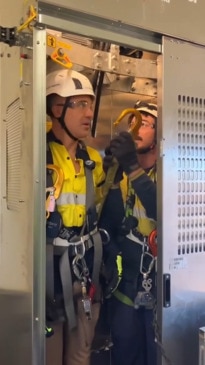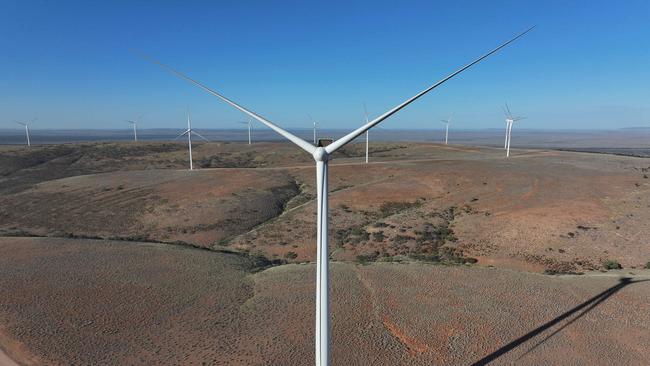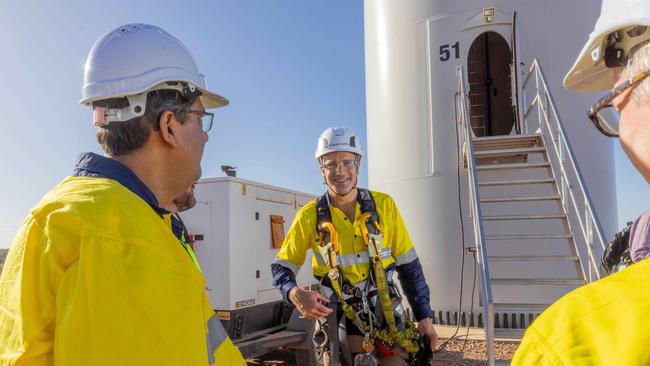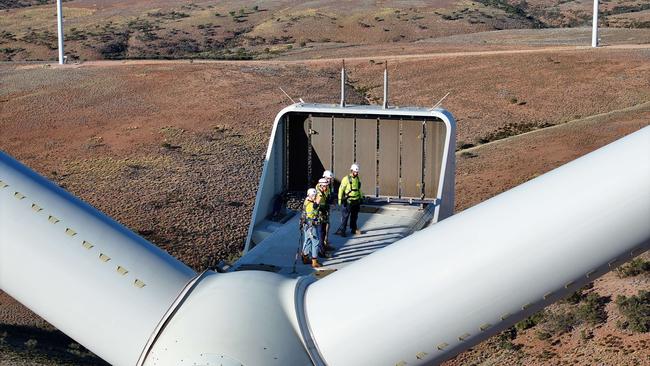Mali says SA uranium has a role to play in decarbonising the world but not in an Australian reactor
Premier Peter Malinauskas says the state has a role to play in decarbonising the world with SA uranium as he brought forward the state’s renewable energy target.

SA News
Don't miss out on the headlines from SA News. Followed categories will be added to My News.
Nuclear power can help decarbonise the world with South Australian uranium, Premier Peter Malinauskas says, but is ruling it out as he accelerates the state’s 100 per cent renewables net electricity generation target.
Mr Malinauskas said this target would be brought forward three years from 2030 to 2027, because of a clean energy boom underpinned by the state-owned, $593m hydrogen power plant operating in Whyalla from 2026.
The Premier on Tuesday finishes a three-day major economic summit in the Upper Spencer Gulf, during which he has touted a State Prosperity Project based on exploiting SA’s abundant natural resources.
The centrepieces are renewable energy, green iron production and BHP’s multibillion-dollar proposed copper expansion, using water supplied by a 600km pipeline from a desalination plant.
Asked by The Advertiser why this prosperity project did not include using BHP’s world-leading uranium deposit at Olympic Dam to fuel an SA nuclear power plant, Mr Malinauskas said this was “all about price” which did not stack up for Australia.
“We want to see the uranium industry in South Australia succeed,” he said.
“The uranium price has spiked globally and I think that’s a demonstration that nuclear power has a role to play in the decarbonisation of the global economy.
“We want to mine that and provide it to countries around the world that require it, that meet all the appropriate safety regulations.”



Mr Malinauskas said the uranium price spike boosted the case for BHP’s Olympic Dam expansion, even though this was a secondary driver to the vast copper resource.
State and federal oppositions have argued for nuclear power and the federal Coalition is drawing up a policy for small modular reactors to replace retiring coal-fired electricity generators.
Mr Malinauskas, who in late 2022 told The Advertiser he was “open-minded about nuclear power and it would be “foolhardy” to be otherwise, said his government was “agnostic about the source of green energy coming into the market”.
“All of the evidence that we’ve got available to us in terms of the price of nuclear energy in a country like Australia is that it doesn’t stack up and it’s not able to compete with solar or wind in terms of price,” he said.
SA’s renewable energy penetration is about 75 per cent and in 2023 renewables met the entire state’s electricity consumption for part of 289 days.
Mr Malinauskas, who climbed a wind farm tower near Port Augusta on Tuesday morning, said 100 per cent net renewables did not mean no gas-fired power, which he said had a “role to play over the immediate future and medium term”.
More Coverage
Originally published as Mali says SA uranium has a role to play in decarbonising the world but not in an Australian reactor





